It’s been a long time since a job for life was on the horizon for many; now even a job for five years can seem like a stretch. It’s not just because more of us are choosing portfolio careers, or retraining in our 40s; whole sections of industry are disappearing. Empty shopfronts where camera stores or video rentals might have stood 20 years ago are evidence of our changing consumer appetites. Advances in technology mean that even the most dependable trades now look shaky. Ten years ago, driverless cars were the stuff of science fiction. Now, how long has your average cabbie got?
“Is there a wave of change coming? Absolutely,” says Raj Mody, a partner at PricewaterhouseCoopers. “And changes are likely to get faster and more disruptive in the next 10 years.” According to PwC’s recently published Workforce Of The Future report, 37% of us are worried about losing our jobs to automation. But this concern may be a little misplaced. “We’re already in a situation where humans and robots are intertwined,” Mody says. “What I think we’ll see more of is deconstructing jobs into component skills – those tasks that can be automated and those that are uniquely human: adaptability, creativity, leadership, even the ability to delight a customer.” So the jobs, or job titles, we recognise may evolve into something quite different.
Beyond robots, there is the uncertainty of Brexit, the ups and downs of the economy, and significant demographic shifts, all of which could transform the way we work. “Not only are people living longer, they aren’t saving enough to fund the old style of retirement, so we’re likely to see people diversifying and adapting to longer working lives,” Mody says.
So how do those in jobs that are already at risk feel about their future? We asked six people in struggling industries how their work has changed, and where they think they will be in 10 years’ time.
The DVD shop owner: Tara Judah, one of three co-directors of 20th Century Flicks, Bristol
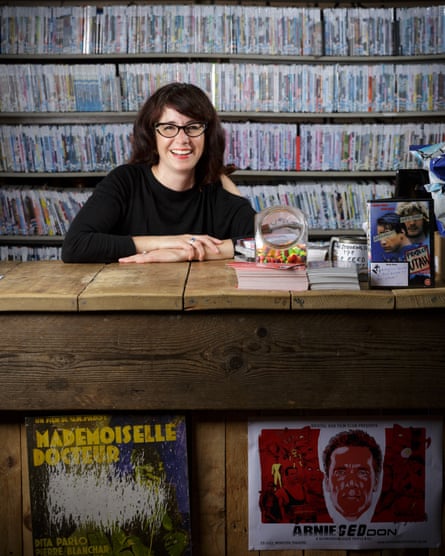
In 2007, the number of DVD rentals peaked at 97.7m. A decade later, and streaming services have effectively seen off the DVD rental market. Postal services such as LoveFilm have disappeared, and the number of high-street video stores has dwindled to a handful.
You don’t go into the world of video shops because you want a good income. It’s the kind of job you do because you like to talk. I don’t know what people who don’t have a local video shop did on the day after Brexit, but we had people coming in all day, sitting and chatting. There was a rolling bottle of wine scenario: people having a drink, then buying a bottle and saying, “Leave it for the next person!”
I became a co-director here in 2015. I worked here before, then went back to Australia for a while. When I moved back to the UK, I felt that Bristol was the kind of place I could settle down. The fact that we’re in Bristol is really important. The video rentals industry doesn’t exist any more; we’re more closely tied to Bristol’s independent businesses. It’s largely because of where we are that we’re able to exist.
We pay ourselves the minimum wage. And we eke out different strands of the business that will help sustain it, from selling records to hiring out our little screening room. One year, our best business plan was to go on the Eggheads quiz show and try to win lots of money. But we didn’t get a film round.
Every year we continue to exist, it’s a surprise. I wouldn’t say we’re stressed about it, and I don’t think we have unrealistic expectations. The only reason the shop is open is because it’s a nice place, and we get to be ourselves. I did have an office job once that was totally soul-destroying. I wouldn’t like to wake up in the morning and dread going to work.
The garment maker: Ross Barr Hoyland, 28, founder of Ross Barr, a knitwear company based in Yorkshire (pictured top)
The UK’s textile manufacturing industry has seen a steady decline since the 1970s. Between 1979 and 2013, output fell by 64.7% and the number of people employed fell from 851,000 to 85,000. According to the Sheffield Political Economy Research Institute, manufacturing in the UK has entered a new phase of decline; despite the creation of jobs, output growth since 2011 has been negligible.
I was a typical lad in school, part of the rugby team and the swimming team, but then I’d go home and read Vogue and GQ and watch America’s Next Top Model. I would have loved to study fashion, but my dad really wanted me to do law. So I compromised and got a part-time job at Selfridges in Manchester while I was studying for my degree. That’s when I started to look at how garments were made. Even some of the big British brands were being made in China, and basically glued together. When I graduated, I decided to start my own business. I had no contacts, no background in manufacturing, nothing.
To make money, I started helping my friend out at his opticians in Wakefield. I was meeting a lot of young adults out of work, people who would have traditionally been employed by the wool industry, before it was completely destroyed. They’d say, “There’s nothing here for me any more.” So that was my inspiration: wool and Wakefield. Now, I design knitwear that is made from 100% British wool, and spun and dyed in West Yorkshire. Finding a manufacturer to collaborate with was really hard. I had a list with about 200 names on it, and I rang every business. Only about 10% were left.
I’ve had the backing of the Prince’s Trust and the Campaign For Wool, which has been brilliant; but in terms of funding, it has been hard. Most funding out there is earmarked for tech, not manufacturing. Wool is one of the oldest industries we have, so it’s a shame we’re neglecting that heritage. Fast fashion has had a major impact on the industry. The customer wants more for less. But more is going into landfill, and those clothes are generally of manmade fibres that don’t decompose.
Brexit has been interesting. It’s made my clothes much cheaper outside the UK, so it opens up markets such as America. But so many of the grants and initiatives that exist were funded by the EU. It’s made everything less certain. It feels as if there’s less support out there and everyone’s struggling to grow. I speak to others in the industry and generally the feeling is the same. People have a hard time finding silver linings. You have to try, though.
The black-cab driver: Bob Azam, 49, drives a black cab in Manchester
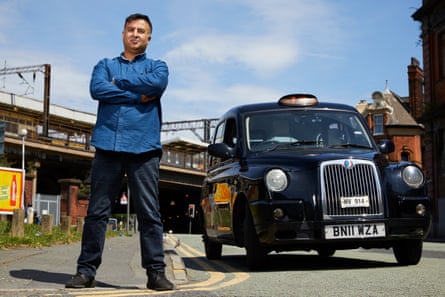
The traditional black cab is under threat: there has been a year-on-year decline in numbers across England, while the number of private hire vehicles (such as minicabs) has jumped by 23% in the last two years. Meanwhile, according to a report from the Oxford Martin School, University of Oxford, it is highly probable that taxi drivers’ jobs will become automated. The arrival of taxi apps such as Uber has hit the traditional black-cab driver.
I got into this because of a bet about 15 years ago. I’d just sold my newsagent business and was at home doing nothing much. I went out for dinner with my brother, who was already a cab driver, and he said, “You don’t know Manchester as well as I do.” I love a challenge, so I bet him I could pass my Knowledge. I’ve been driving a taxi ever since.
It’s funny, a few years ago we were saying, “Uber? Never gonna work – who’s going to use an app to get a taxi?” But it has decimated our trade. I could take you round Manchester at the weekend and show you Uber drivers who have come here from Wolverhampton, Leeds, Liverpool to pick up fares, but they don’t know the area. They have to work really long hours to make a decent living: 15-hour shifts. But of course people use them, because it’s cheap.
You have to adapt. I use [taxi finding] apps such as Gett, which have revolutionised the way I work, so I can find fares if I’m in a new bit of town. I’ve got a little PayPal machine, because who has cash any more? The drivers who aren’t getting into this technology are struggling. I think they’re the ones who will die out.
My earnings have probably dropped about 50% in the last few years. I could earn more if I was prepared to work longer hours, but my priorities have changed. I’d rather earn less and spend more time with my family. Will I still want to do this in five or 10 years’ time? I don’t know. Maybe there will be driverless cars by then; it sounds mad now, but look what we said about Uber.
The glassblower: Terri Adams, 48, scientific glassblower, based at the University of Oxford

Earlier this year, the Heritage Crafts Association published a report on endangered traditional crafts in the UK. Scientific glassblowing was on the red list of those that might die out completely, with fewer than 50 currently employed in the UK.
Glassblowing goes back to Egyptian times, but what I do is probably not what most people think of when they imagine glassblowing. I design one-off pieces of equipment for specific research projects. I make a lot of “perfusion glassware”, which is used to keep small organs alive outside the host body. One of the pieces I made recently was a gas cell that was to be taken up a volcano. It needed special silicon windows attached, so that the gas collected could be viewed using an infrared spectrometer.
I fell into this. I was supposed to train in forensic science, but then I went to visit a university campus with a friend and stumbled on a display of scientific glassware. I was fascinated. There aren’t many women doing what I do; it’s a typically male environment and it can be quite intimidating. The work is often very physical, actually handling the glass, snapping it and cracking it. Glass is a genre, like metal – there are so many different kinds and you need extreme temperatures to manipulate it, so I’m often working with these roaring great blue flames. There’s the potential for some nasty burns but, touch wood, I’ve never been injured.
There are now fewer than 50 of us doing this job in the UK and many are approaching retirement. The future of the profession is really based on people taking on apprentices; but there aren’t any accredited qualifications that reflect the level of skill involved, so we have a problem. The type of equipment we produce to support first-class research is not something that can be automated. It’s a skill that can only be learned through years of training. Everyday household items such as the lightbulb, the original TV tube and fibre optics were all realised through the efforts of a scientist working with a skilled scientific glassblower. The revolutionary lithium battery was developed by research scientists in Oxford, using bespoke scientific glassware. Losing this skill could have a real impact.
The independent bookseller: Simon Key, 48, co-owner of the Big Green Bookshop, Wood Green, north London
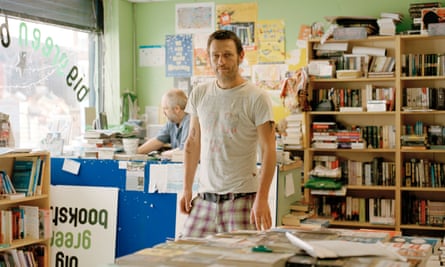
The number of independent booksellers in the UK has fallen for 11 consecutive years, almost halving from 1,535 in 2005 to 897 in 2017. The scrapping of the net book agreement, which ensured that all books were sold at roughly the same price, makes it impossible for independent booksellers to compete with online retailers.
I’ve been in bookselling since 1984. I left school at 15 and went on a YTS scheme: the choice was work in a bookshop or work in a camera shop. I chose the books, even though I wasn’t that into them – until I turned up on the first day and had my mind blown. I thought, “This is just fantastic.” So that was that.
Tim [West, Big Green co-owner] and I were the managers of a Waterstones in the shopping centre up the road. We were plodding along nicely, then our area manager came in one day and said they were closing the shop in nine days. It was a bit of a surprise. I said to Tim, “I think Wood Green really needs a bookshop. Shall we open our own?” Tim said, “Yeah, all right then.” We started a blog and got lots of local support. We got the keys to this place in February 2008 and opened a few weeks later, with much fanfare – quite literally: there was a trumpet player there.
On the first day, we sold about 5% of our total stock and we thought, “This is brilliant.” The next day, we took around £100 – not so brilliant. And that’s been the pattern since: lots of ups and downs. January was a stinker this year. I know a lot of people in the industry who said it was the worst they’ve ever had.
Tim keeps a closer eye on the accounts than I do. A couple of months ago, our finances looked pretty grim. I tweeted something like, “We’ve got six days to pay the bills, so you lot need to start buying books”, and went to bed. The response was incredible: thousands of retweets, loads of people buying books or offering donations. It was really full-on for about a week and a half. The best kind of hard work.
We’ve got a loyal customer base, but sometimes it’s tricky. Supermarkets are selling books. Amazon is still aggressively discounting and trying to take over the world. And with this part of London being such a transient area, we need to keep letting locals know we exist. There’s a slight upturn at the moment. More people are buying physical books again, and a lot of independent publishers are producing some fantastic stuff. That’s good for people like us, because the major online retailers don’t pick up on them. You’ve just got to try to be different. We never sit here waiting for customers to come in. We’re always thinking, “What can we do to get more?”
The local journalist: Joy Persaud, from Brighton, has worked as a freelance journalist since the early 1990s
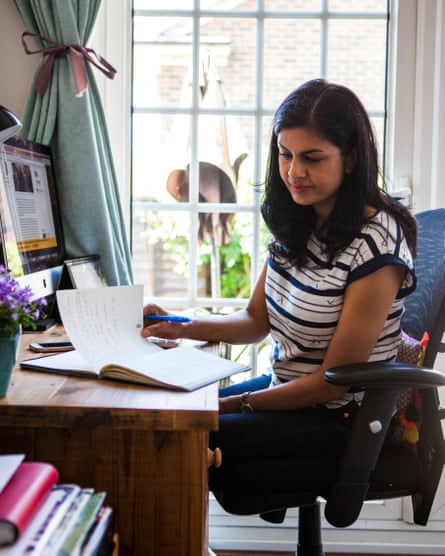
The number of local news publications has dropped by 35% over the last 30 years. According to a 2015 report, about 20% of journalists make less than £19,200 a year; many will be below the living wage.
I started out on the Ealing Gazette in 1990. In those pre-internet days, there was no option but to pick up the phone, get out of the office and meet people. I uncovered plans to close a London hospital, which made our front page and then the Evening Standard. The hospital still stands. There were smaller victories, too, such as kicking up a fuss when we encountered people living in substandard accommodation in various corners of west London and lobbying to get them rehoused. We were the voice of people who often felt invisible. And people in power would read our stories and act on them; reputations were contained in a smaller vacuum and it was easier to make an impact.
After seven years, I took a job on a magazine, wanting to broaden my portfolio. By 2002, the economy was failing and I realised, after being offered a job for a far lower salary than my predecessor, that I had to leave.
Now, my work is a mixture of business articles, celebrity interviews, corporate copywriting and coaching people to write well. My focus is national rather than local, partly due to the lack of funds available in local news. Local newspapers have always paid relatively poorly, and their demise has meant budgets have largely moved in-house – and stayed at decades-old levels. Also, there are people who will happily write for nothing and editors (local and national) who believe exposure is enough of a reason to commission or run a piece. It isn’t.
Copywriting software has given people with no grounding in journalism the ability to disseminate their views via easily-set-up websites. We professionals are up against the purveyors of fake news, and it is hard for the unwitting reader to tell the difference. This all conspires to devalue journalists’ output.
If I had my time again, I’d still be a journalist. If my daughter wanted to follow in my footsteps, I’d hope that by the time she’s at work in the 2030s, the fashion for Twitter-style snippets over in-depth analysis would be long gone. When Grenfell happened, my heart sank, not only for those affected, but also because there had been no one to listen to their fears the way we once did at the Ealing Gazette. Now, the micro is lost to the macro; the swipe of a screen gives people a global audience, and it’s increasingly rare for readers to analyse what’s beyond the headlines.
Future proof: what jobs will we do next?
We’ll see an even greater rise in the ‘one-to-one’ or gig economy, says Raj Mody of PwC, as people look for ways to keep working longer. Expect a rise in technology that enables services such as renting your home, or providing services directly to consumers as we all look for ways to make more money.
It’s likely that certain aspects of jobs will become automated, with humans hanging on to the parts that require greater creativity, social intelligence and perception. According to analysis by Carl Benedikt Frey and Michael Osborne of Oxford Martin School, University of Oxford, the jobs most at risk of becoming automated include telemarketing, data entry keyers, insurance underwriters and legal secretaries. Those least at risk include therapists, choreographers, HR managers and dentists.
Frey and Osborne warn that their predictions don’t take into account political activism and legislation – take the recent Transport for London showdown with Uber. We may see new laws that protect workers’ rights and curb the pace of change.
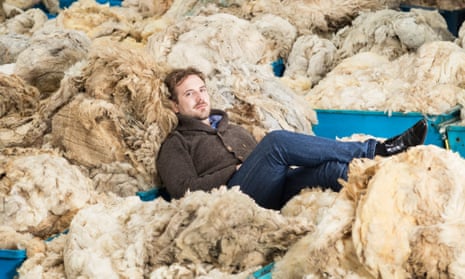
Comments (…)
Sign in or create your Guardian account to join the discussion